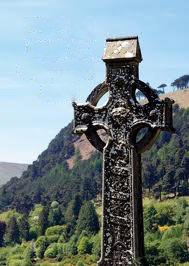Liturgy and Expression of Culture and Faith

by Fr Brian O'Connell sm
People sometimes say that we must not disagree over worship and it is unseemly to squabble over the way people celebrate Mass, because it is a holy action of God’s people at worship. This is, of course, complete nonsense. Liturgy is public worship, and if something is precious it is worth fighting for, though never during the celebration, nor in a way that offends charity.
The officials of the Congregation of Divine Worship (CDW) certainly believe so. A recent example was the public criticism of the final Mass (Status Orbis) of the Eucharistic Congress in Dublin in June by Monsignor Andrew Wadsworth (Chief of the ICEL). His brief is the new English translations but he drew a broader bow.
He said the whole liturgy had the feel of a ‘performance’ and there were instances of clapping. More significantly he said the principal focus of the liturgy was the assembly. Obviously praise of God ought to be the principal focus, but I would have thought that in a liturgy whose theme was the state of the world it would be hard for the assembly with full and active participation to be inconspicuous; and the gospel teaches ‘the sabbath was made for man’.
The Monsignor complained that there was “no Latin” and “no Gregorian Chant”, and unsuitable hymns; the Entrance and Communion Chants were not sung. He claimed this Mass was an example of the decline in liturgical standards, and departed from norms set out in the GIRM (General Instruction of the Roman Missal).
With full and active participation in a liturgy it is hard for an assembly to be inconspicuous
The GIRM is indeed an important document with many detailed guidelines, but containing a lot of implied choice eg 1:“It is possible to use the antiphon or another chant that is suitable to the sacred action” N48. eg 2: “The Alleluia and verse if not sung can be omitted” N63. The Monsignor is regarding the General Instruction as a rigid template rather than a normative instruction. All the way through there is scope for choice to match the rite to the reality of the congregation.
The Irish Eucharistic Congress was meant to be, and indeed was a deep reflection and a joyous celebration of the renewal of the Irish church, which has been beleaguered by worse problems than bad liturgy. A successful Eucharistic Congress has been a big fillip for the local churches.
Fr Peter Jones of the National Liturgy Centre Maynooth who designed all the Congress liturgies replied to Mgr Wadsworth’s criticisms as ‘unfair and unhelpful.’ The final Mass was one of eleven liturgies during the Congress, and there was Latin and Gregorian chant as part of the others. The first round of clapping was after the statement from Pope Benedict, and several times clapping punctuated the homily of the papal nuncio. Fr Jones was surprised that the Director of International Commission for English in the Liturgy, in listing the advances in liturgy since Vatican II, did not mention the vernacular as one of them.
I believe that Mgr Wadsworth before commented publicly on a major liturgy of Ireland, could well be advised to spend a month on the Arran Islands, and reflect on the remarkable symmetry between Celtic spirituality and the liturgical year; he could then visit Glendalough and hearken to the 1000 years of Irish monasticism nurtured there, and then listen to the version of English the people in Armagh and Dublin use to speak to God in prayer.
Liturgy is still something of a battleground in the RC Church. Archbishop Arthur Roche, recently appointed secretary to the CDW, remarked that when he was Head of ICEL he found it was true what people say about the difference between a terrorist and a liturgist. You can reason with a terrorist!
 Entries(RSS)
Entries(RSS)